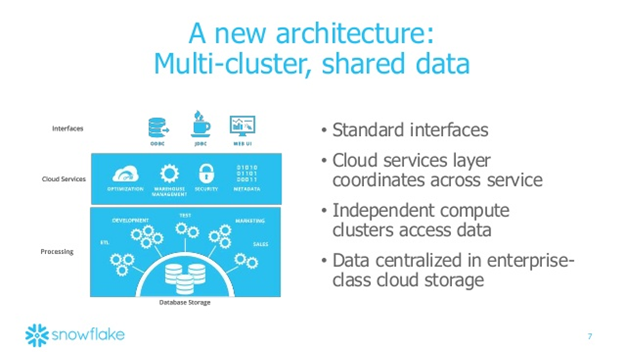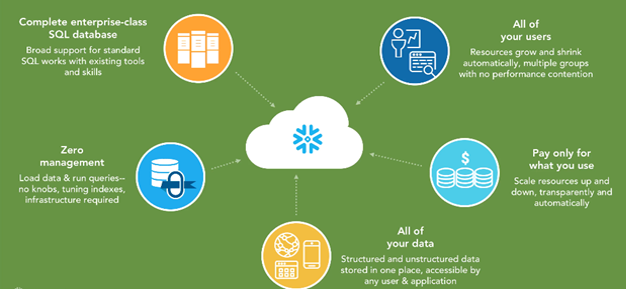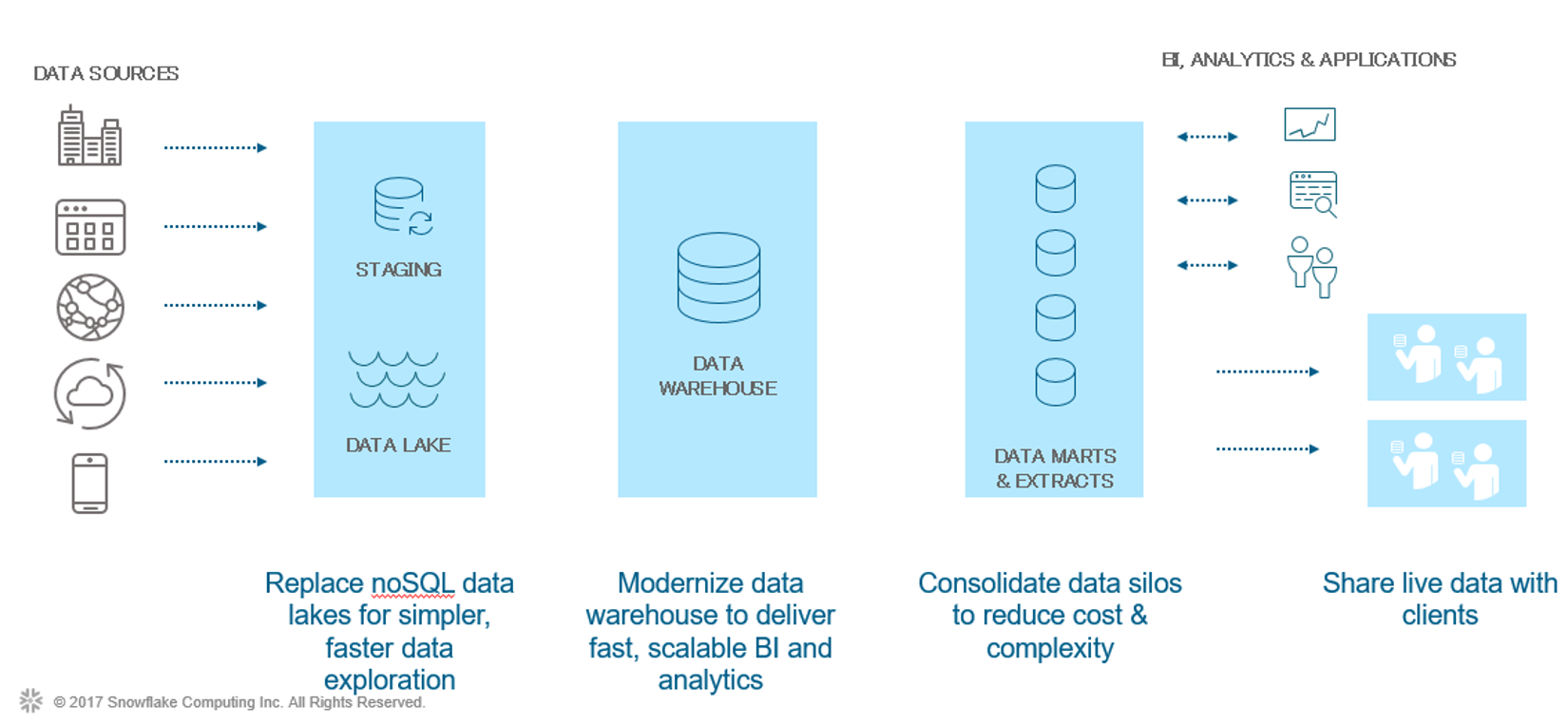Snowflake: A Modern Cloud-Based SQL Data Warehouse
With the maturing and ever increasing acceptance of the cloud across multiple industries and the data gravity gradually moving to the cloud, i.e. more data being generated in the cloud, we are seeing some interesting cloud-based data and analytics platforms offering unique capabilities. Some of these platforms could be disruptive to the established market leaders with their innovative thinking and ground up design that is “born in the cloud and for the cloud.”
One of the technologies bringing innovation to the cloud analytics warehouse market is Snowflake, a SQL Data Warehouse built for the cloud and delivered as a service.
What is Snowflake?
Snowflake is an analytics data warehouse provided as a software-as-a-service (SaaS) offering that runs completely on cloud infrastructure and is currently deployed on AWS or Azure. Its architecture is a hybrid of traditional shared-disk and shared-nothing database architectures and separates the storage from the compute layer with the services (‘The Brain’) layer at the top. This unique architecture enables Snowflake to leverage the elasticity and agility of the cloud and provide unmatched performance without turning any knobs or performing maintenance activities at a fraction of the price of on-premises solutions.

Why Snowflake?
Over the last few decades that we have been working with data and analytics solution architecture and design, we have consistently heard several pain points from our clients:
- Inability to scale with data growing at a rapid pace without any system downtime
- Lack of quick turnaround times to ingest new data sources for analyses
- Difficulty ensuring optimal load and query performance with the ever shrinking ETL load windows due to the global nature of the business
- Difficulty in easily deriving insights from both structured and unstructured data
- Time spent on Infrastructure maintenance and Database tuning
- Managing Storage Costs, data protection, and backup strategies
- Designing for Security & Encryption
- Defining Disaster Recovery & Business Continuity strategies
With its game changing innovations and unique architecture, Snowflake helps overcome all of these challenges while also offering additional features, including the ability to monetize your data assets.

Snowflake’s Features
Scalability
- Scale Up for performance and Scale Out for Concurrency, with no downtime
- Independent open-ended scalability of compute and storage
- Scales down during slow times for cost savings
Performance & Concurrency
- Up to 200 times faster than other similar offerings
- Load data and query at the same time with no contention
- Adapts automatically based on query activity and concurrency
Store both Structured and Semi-Structured data together
- Quickly bring in and analyze new data sets
- Data Scientists can react quickly to new signals in JSON data
- Easily handle changes to the format of the data
Costs
- Comparable for Amazon S3 per TB storage costs
- Zero Clone eliminates need for separate environments; pay only once for master copy
- Compute Costs – billed per second of usage based on credits per hour
Data Protection and Back Ups, DR & HA
- Eliminate the need to manage servers; Replicated 3+ ways across data centers
- Reduce overhead by eliminating backup processes
- Time Travel – reduce recovery time from hours or days to seconds
Security & Encryption
- End-to-End Encryption, at rest and in motion
- No need to manage complex security models
Maintenance
- Near Zero Administration
- No Indexes or tuning required
Monetize your Data – Live Data Sharing
In addition, a key feature that Snowflake offers is the ability to monetize your data assets by seamlessly sharing it to one or more consumers with a Snowflake account. The Producer (owner of the data) only pays for the nominal data storage costs while the consumer pays for no storage costs.
There are many benefits of this architecture-enabled design:
- Data resides in only one place: the database
- Zero data movement for consumption
- Instantly query the updated version of the data as soon as the producer updates the data
- Enable the consumer to merge shared data with their own data to gain better and complete insights
- Share the data with an unlimited number of consumers

If your organization is open to the cloud (if not then you might want to reconsider that strategy) and experiences any of these pain points, Snowflake might be a valuable platform for you to explore, due to the rich features and functionality, as well as the cost savings it offers.
When to Use Snowflake
There are several common use cases in which customers are using Snowflake:
- Consolidate data marts and extracts in order to reduce cost, complexity, and cumbersome data management while giving analytics tools and users faster, direct access to data.
- Modernize their data warehouse by replacing legacy data warehouse appliances and software with a solution that is faster, simpler, and more scalable – at a dramatically lower cost.
- Replace noSQL systems and data lakes (built on technologies such as Hadoop) with a solution that not only lets them easily store diverse data at low cost for exploration and experimentation but also supports high-performance reporting and analytics in a true data warehouse environment.

To explore the platform first-hand, you can sign up for a trial version.
About Ironside
Ironside was founded in 1999 as an enterprise data and analytics solution provider and system integrator. Our clients hire us to acquire, enrich and measure their data so they can make smarter, better decisions about their business. No matter your industry or specific business challenges, Ironside has the experience, perspective and agility to help transform your analytic environment.





